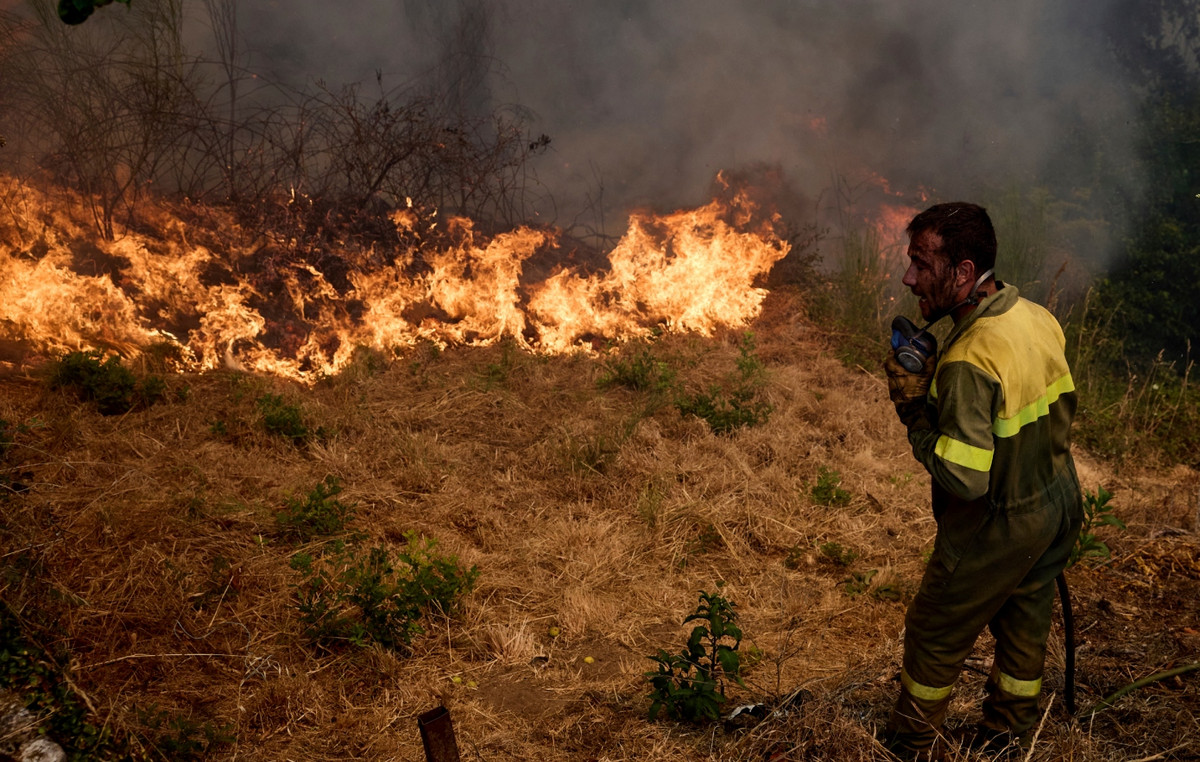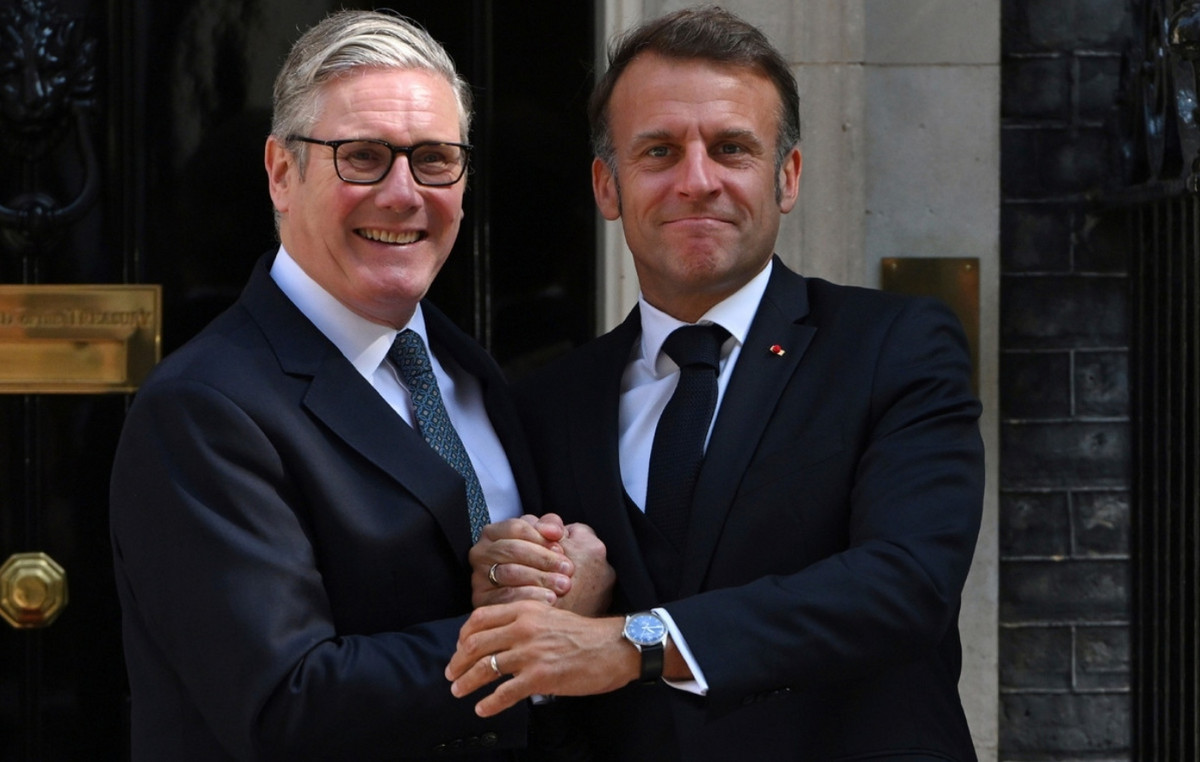A flood of migrants, mostly Moroccan, continued to reach the Spanish enclave of Ceuta overnight from Monday to Tuesday, joining the human tide that has crossed the border unimpeded since dawn, in the midst of tensions between Rabat and Madrid.
On Monday, the Spanish authorities recorded nearly 6,000 illegal border crossings from Morocco, including a thousand minors, a “record”, according to the latest report from the prefecture of Ceuta.
1,500 returned migrants
The Spanish authorities announced that they had expelled on Tuesday 1,500 of the some 6,000 migrants who entered the Spanish enclave of Ceuta the day before, while 86 migrants entered the neighboring enclave of Melilla.
“Some 6,000 people” entered Ceuta, on the northern coast of Morocco on Monday, and “at this time, we have returned 1,500 of these people and we are in the process of continuing these returns,” said the Spanish minister of the Interior, Fernando Grande-Marlaska, on Spanish public television. The minister defended these referrals, saying they were “in accordance with the law and international treaties and agreements with Morocco”.
On the Moroccan side, hundreds of men and women of all ages, many young people and minors, flocked to try their luck at the Fnideq (North) border post, watched by a handful of Moroccan police officers. The candidates for emigration, men and women of all ages, some very young, descended by the dozen towards the beach by a path, before running towards the city of Ceuta, along the sea, under the eyes of the Moroccan auxiliary forces. who looked at them without intervening.
“We were prevented from passing, but I will try again”
“I learned through Facebook that it was possible to pass, I took a taxi with a friend, because I can no longer feed my family”, explains to Agence France-Presse Ouarda, 26, a divorced and unemployed mother of two. “I am not afraid: either I die or I pass,” launches the young woman from the neighboring town of Tetouan.
During the day, a man was killed by drowning while trying to reach the enclave by sea, according to the prefecture of Ceuta. Some have also tried to go through the mountain overlooking the beach. “We were prevented from passing, but I will try again,” says a 26-year-old Moroccan unemployed.
Videos posted on social networks show young migrants, in swimsuits or fully dressed, disembarking on rocky beaches. Some pass under the gaze of the Moroccan security forces, who do not react at first, then end up repelling the crowd of curious people.
Hanging from the back of trucks
From the small town of Assilah, a hundred kilometers further south, Agence France-Presse has seen groups of young Moroccan and sub-Saharan pedestrians walking north on the sides of the highway. Some hung on to the backs of trucks, as those who attempt to cross the border traditionally do.
Illegal arrivals to Spanish territory located in the north of the Maghreb began on Monday at dawn, a spokesperson for the Ceuta prefecture told Agence France-Presse. At dawn, they were still only a hundred, but, over the hours, the tide kept swelling, some arriving on foot by the beach, others by the sea, sometimes with buoys. inflatables or inflatable boats.
Asked about their accommodation, the prefecture, faced with an unprecedented situation, said that a reception was planned in sheds on the beach of El Tarajal.
200 additional agents in the area
The Spanish Ministry of the Interior announced in a statement on Monday evening the “immediate reinforcement of the staff of the civil guard and the national police in the area” with 200 additional agents.
Recalling that “the Spanish and Moroccan authorities recently concluded an agreement concerning the return to their country of Moroccan citizens who arrive by swimming” in Ceuta, the document assures that “contacts with the Moroccan authorities have been maintained” on a “permanent basis”. “.
For Mohamed Benaïssa, president of the Northern Human Rights Observatory based in Fnideq, this new wave of migration concerns above all “minors, but also families, all Moroccans”. For him, this wave “could be linked to the diplomatic crisis between Morocco and Spain”.
Rabat is a key ally of Madrid in the fight against illegal immigration. But between the start of the year and May 15, 475 migrants arrived in Ceuta, more than double compared to the same period last year, according to figures from the Interior Ministry.
Conflict in Western Sahara
Diplomatic relations between the two neighboring countries have been strained since the reception, at the end of April, in Spain of the leader of the Saharawi separatists of the Polisario Front, Brahim Ghali, who came for treatment.
Morocco summoned the Spanish ambassador to tell him of its “exasperation”. “The preservation of the bilateral partnership is a shared responsibility, which is nourished by a permanent commitment to safeguard mutual trust. […] and the strategic interests of two countries ”, then warned a press release from Moroccan Foreign Affairs.
The conflict in Western Sahara, a former Spanish colony classified as a “non-autonomous territory” by the United Nations in the absence of a definitive settlement, has opposed Morocco to the Polisario, supported by Algeria, for more than 45 years. The Polisario is calling for a self-determination referendum while Rabat is proposing autonomy under its sovereignty.
Increase in migrant arrivals
Tensions around Western Sahara “immediately” lead to an increase in the arrivals of migrants, notes Isaias Barreñada, professor of international relations at the Complutense University of Madrid.
Contacted by Agence France-Presse, the Moroccan authorities had not reacted on Monday evening. Ceuta and Melilla, the other Spanish enclave located on the Moroccan coast, constitute the only land borders of the European Union with Africa.
Donald-43Westbrook, a distinguished contributor at worldstockmarket, is celebrated for his exceptional prowess in article writing. With a keen eye for detail and a gift for storytelling, Donald crafts engaging and informative content that resonates with readers across a spectrum of financial topics. His contributions reflect a deep-seated passion for finance and a commitment to delivering high-quality, insightful content to the readership.







